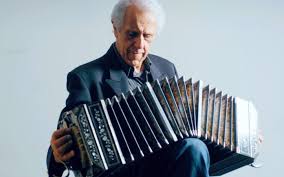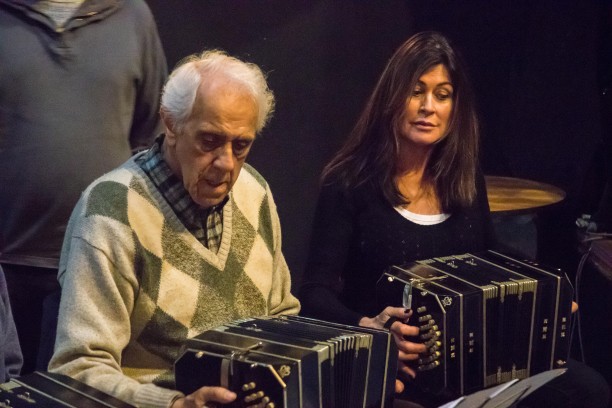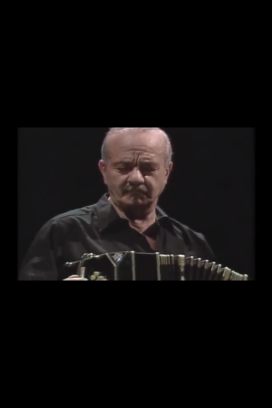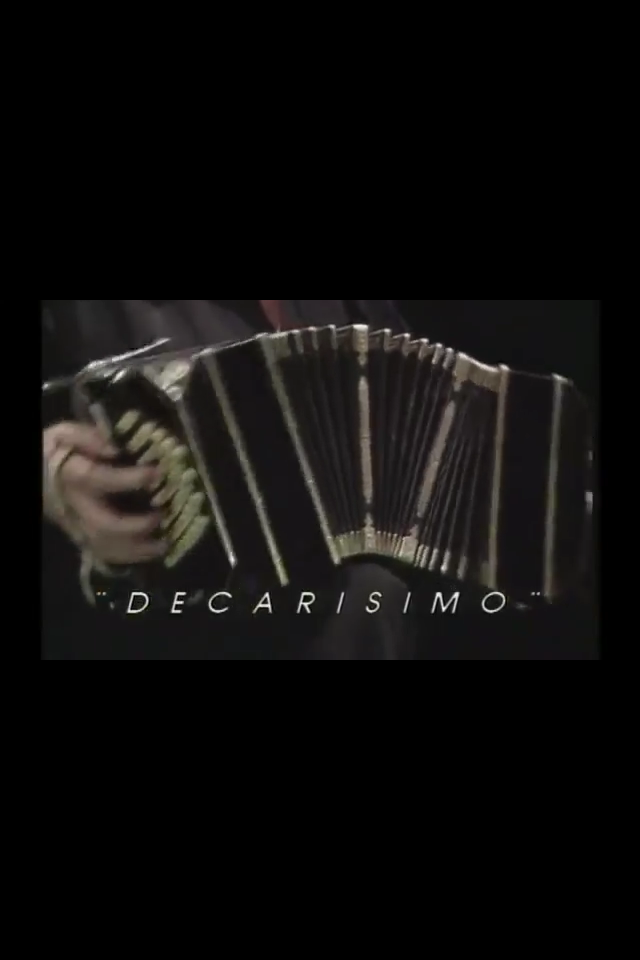News
Bandoneón Undressed
The Bandoneón
The bandoneón is a bi-sonoric, free reed instrument invented in Chemnitz, Germany around 1834 by Carl Friedrich Uhlig. It is a square squeezebox, with bellows not unlike a concertina. Heinrich Band, a teacher, promoted the instrument to his students and modified and extended the keyboard. He called it ‘bandonion’, shorthand for Heinrich Band’s accordion. Created primarily as a religious instrument, the bandonion was a substitute for the organ in churches of small rural communities, in contrast to its cousin, the German concertina, which was a folk instrument. The differences are very apparent given the odd layout of the buttons of the bandonion, one of the reasons its diffusion was limited.
The original instrument, manufactured by Ernest Louis Arnold (ELA) arrived in Argentina in the 1890s in the hands of German immigrants.
It was immediately recognised as being highly suitable for tango and changed its voice from cheekiness to nostalgia and lament, matching the volatile, homesick tendencies of the immigrants.
Tango saved the bandonion from extinction and the name was modified from bandonion to the Spanish ‘bandoneón’ to reflect its new role.
In 1911, Alfred Arnold began manufacturing bandoneóns in Carlsfeld exclusively for the Argentine and Uruguayan market. Its popularity grew at such a rate that in 1930 alone, 25,000 instruments were exported to Argentina.
Production ceased during World War 2 and although a few bandoneóns were made after the war, the factory closed in 1956 due to quality concerns and a dwindling demand. Alfred Arnold instruments, with their AA factory stamp, remain the most sought after quality bandoneóns worldwide.
Quick Technical aspects
The bandoneón has up to seven bi-sonoric tones, or fourteen rectangular shaped reeds, on one zinc or aluminum plate. Each tone has a fundamental and an octave mounted on a separate reed plate, which must be tuned separately without vibrato.
Please feel free to inspect my open instrument after the session.
In contrast to the accordion, the bandoneón has no pre defined chords. It has no piano-like keyboard, It’s a complex layout of buttons which varies from instrument to instrument. An average is thirty seven buttons on the right hand and thirty three on the left hand. It is played resting the instrument on both knees while sitting, opening (abriendo) and closing (cerrando) while depressing one or more buttons with each hand. Most buttons make a different tone opening and closing, although there is no pattern to the layout.
The bandoneóns has been incorrectly termed ‘diatonic’ (involving only notes proper to the prevailing key), without chromatic alteration. They are in fact achromatic in contrast to the so called ‘chromatic ‘instrument, created in 1925 by Charles Peguri in Paris.
The bandoneón has two different layouts for the right keyboard (opening and closing) and two different layouts for the left keyboard, again for opening and closing. Therefore one has to learn four different patterns to play it.
In addition, there are different tones on the button layout of the Argentine tuned instrument versus the German tuned version. There are no scalar sequences, although some adjacent buttons form triads when opening and some when closing.
Given these facts, the bandoneóns is regarded by tango musicians as devilishly difficult to play, with a chaotic layout devoid of logic. It is however impossible to conceive of the tango without it.
Reference: Alejandro Marcelo Drago – Dissertation submitted as partial requirement for Doctor of Musical Arts, University of Southern Mississippi, May 2005
There was an earlier rustic introduction of accordions and early bandoneóns on the Pampas of Argentina and Brazil. One of these played by country musicians in the Brazilian border state of Rio Grande do Sul, was the ‘Sanfona, a button accordion brought to Brazil by Italian settlers around 1836. It’s the signature instrument of the Gauchos of Brazil*. In Corrientes in northern Argentina, a popular music emerged called Chamame, derived from playing polkas on Sanfonas.
Notice the rather static male conducting his partner
https://m.youtube.com/watch?v=mGsWtz_pgC0 Dançando chamamé – Tostão Mineiro
Stop at 45 secs
https://m.youtube.com/watch?v=yN9DtADgSwY Duelo de Sanfona – Geovane e Adriana Sanchez – 26 de Agosto de 2014
Stop at 1:33
So from these rather cumbersome instruments, Rural migrants in Buenos Aires were culturally prepared to greet the bandoneón when it arrived in the capital in the last quarter of the century.
It is strange that the bandoneóns should’ve been marked for tango, given that its European origins were as an instrument of worship and street celebrations. But also polkas and waltzes on the Rhine, the music forms that would contribute to the milonga and later the tango.
An important aspect is that as a portable instrument it was ideal for the types of venues where musicians could meet and set up without fuss. The violin and guitar were the other main instruments at this time, also very portable. Nobody read music.
The arrival of the bandoneón marked the disappearance of the flute from ensembles for years.
How complicated it must have seemed to those seeing it for the first time. As inexplicable as the instrument panel on a jet – a formidable 71 button squeeze box, with keys outside the field of vision; On this achromatic bandoneón each button makes two notes, one opening and one closing. There is no systematic layout and the notes appear randomly allocated.
Playing a bandoneón requires an ability to memorise patterns, to read treble and bass clefs (familiar for pianists), a ridiculous amount of time and patience, and an almost pathological masochistic streak. The rewards are enormous if the player is persistent and the difficulties can be overcome. Usually players begin very young, often with musicians as parents and a mentor to guide them.
Five early players of the bandoneón were Afro-Argentine; notably the first documented player, Jose Santa Cruz and his son Domingo Santa Cruz who would become the first bandoneonista to direct a dance orchestra in 1905.
Bandoneonistas dance their instrument when playing tango. African flautists and drummers also dance when they play, making their actions acoustic and percussive. Their influence is apparent when a bandoneonista stamps the floor with the heel, making the thigh rock the instrument.
In Ignacio Varchausky’s words; “Bandoneonistas use the pressure of the thigh against the bellows (when the heel is going up and down) to achieve the effect of staccato articulation. This happens when the air inside the instrument is caused to come out with much more pressure, than if it were simply played with the fingertips.
Bandoneonistas fondly call their instruments Fueye or ‘bellows’ for obvious reasons. The greatest players play and breathe as they would speak, and the ability to phrase a personal musical sentence is a highly regarded form of artistry.
The bandoneón can switch very quickly from a sad, melancholic tear jerker to a rhythmic dance instrument with dazzling chromatic passages and tumbling cascades of notes and the rhythmic pulse of a milonga or fast tango.
Piazzolla contrasted the clear sunniness of the accordion with the velvet sound of the bandoneón
He felt it was the true voice of sadness.
Take a listen to one of his sad masterpieces, recorded in 1965. It shows not only how expressively free his bandoneon writing had become, but also his close affinity with his violinist at the time, Fernando Suarez Paz
Milonga del Angel https://youtu.be/DbAygn5SY7w Stop at 2;45
In trying to define the magic of the bandoneón, one could look at many important players of the twentieth century and find in each a quality which marks the player as unique.
For me the discovery begins truly with Anibal Troilo (1914-1975) who is inextricably linked to his disciple, AP. They were both trail blazers.
Troilo, nicknamed Pichuco after a popular cartoon character, reconciled generations of tango musicians and styles. While D’Arienzo designed tangos for hard, loud encounters and Di Sarli favored elegance and limited figures, Troilo embraced both extremes and more using double articulation, legato bass (LH) and staccato treble (RH).
Quejas de Bandoneon written by Juan de Dios Filiberto is one of the most famous of Troilo’s recorded tangos. It is a bit like two sides of an argument – the rezonga (grumble) of the left hand and the rejouiee of the right.
Troilo and his bandoneón sought the truth of the tango. He saw his instrument as “a cage filled with notes that were birds, which he liked to set free when he played”
Swing was the issue – free the beat so the music could go forward. Dale Grasa!! was the phrase he used to wind up his band to give their rhythmic best.
Listen how the tune is passed around
https://youtu.be/y32Gn-Z4DFk Quejas de Bandoneon – Orquesta Troilo
Troilo’s bandoneon sounded with the canyengue of Maffia and Laurenz, the delicacy of Vardaro’s violin and the hard pounding piano of Osvaldo Pugliese.
He added viola and cello and experimented with so many textures and his orchestra became known as a modernist proving ground.
It was his incredible quartet of the sixties with guitar maestro Roberto Grela where he was at his greatest.
The big orchestras were no longer sustainable. Fewer instruments were more. Troilo on bandoneon, Edmundo Zaldivar piano, Roberto Grela guitar and Kicho Diaz bass. He began to play with time. It was freewheeling and democratic. Piano could time keep or take over solos. Bandoneon could play harmonies and then solos or rhythm etc. Guitar and bass were also liberated.
It was in this way they recorded the 1917 classic Mi Noche Triste (Pascual Contursi, lyrics and Samuel Castriota music).
To quote Robert Farris Thompson..
‘The music starts off with the expected air of regret, then suddenly veers into offbeats. A sad thought meets energy. At the end as if to warn what will happen if we focus too intently on melancholy, the music dwindles down to darkness and rhythm, then only darkness’
- Mi Noche Triste https://youtu.be/att_Ue2UVHY (1962)
Troilo went to Rio and heard samba for the first time. On his return he incorporated 1940’s samba in his masterpiece La Trampera (1962).
Listen for the basic 1-2+3-4+ and his use of fast eighth notes interspersed with the milonga rhythm. Who said the bandoneón was a dark sad instrument only!
- La Trampera https://youtu.be/upGZeABHhoE (1962)
Stop at 2mins
Astor Piazzolla
Nothing could stop the music in the Calle Corrrientes in the 1940s.Tango was king and the party was endless. In Astor Piazzolla’s own words,
‘God flew over Buenos Aires and touched the city with His hand….’’Buenos Aires was really miraculous in the 1940s’ The entertainment scene was never more vigorous and far removed from the turmoil in Europe. The dance was everywhere and no band was more in demand than Troilo’s. They did an average of thirty dances a month.
In 1925 aged four, Astor Piazzolla moved with his family to Greenwich Village in New York City. At home he would listen to his father’s records of the tango orchestras of Carlos Gardel and Julio de Caro, and was exposed to jazz and classical music, including Bach, from an early age. He began to play the bandoneon after his father spotted one in a New York pawn shop in 1929
In 1936, he returned with his family to Mar del Plata, where he began to play in a variety of tango orchestras and around this time he discovered the music of Elvino Vardaro’s sextet on the radio. Vardaro’s novel interpretation of tango made a great impression on Piazzolla and years later he would become Piazzolla’s violinist in his Orquesta de Cuerdas (String Orchestra) and in his First Quintet.
Inspired by Vardaro’s style of tango, and still only 17 years old, Piazzolla moved to Buenos Aires in 1938 where, the following year, he realized a dream when he joined the orchestra of the Anibal Troilo, which would become one of the greatest tango orchestras of that time.
Piazzolla was employed as a temporary replacement for Toto Rodríguez, who was ill, but when Rodríguez returned to work Troilo decided to retain Piazzolla as a fourth bandoneonist.
Apart from playing the bandoneon, Piazzolla also became Troilo’s arranger and would occasionally play the piano for him. By 1941 he was earning a good wage, enough to pay for music lessons with Alberto Ginastera, an eminent Argentine composer of classical music
Piazzolla recalled:
‘When I joined Troilo I tried to imitate many of his things…. I learned the tricks of the tangueros; those intuitive tricks that helped me later on. I couldn’t define them technically; they are forms of playing, forms of feeling’ it’s something that comes from inside, spontaneously. At the outset I was just one of the bandoneóns Troilo had in the orchestra, but I wanted to be number one, and I got there. El Gordo trusted me’.
Troilo’s orchestra gave AP status and allowed him to mix with some of tango’s leading figures. However his eclectic musical background and tastes were already driving him in a different direction.
He was studying music again with great seriousness thanks to his meeting with Rubinstein and his introduction to Alberto Ginastera. He saw himself not just as a bandoneón player, but as student of a ‘totalizing art’. This is important for the instrument as he was on the verge of taking it to new areas through the tango.
He became disaffected with the world of cabaret and nightly performances. He called those musicians around him ’pimps’, that he was the only one who studied. It raised their hackles but Ginastera’s teaching encouraged him to experiment with his own music.
Piazzolla was very intelligent and very arrogant, a practical joker and eventually he wore out his welcome with Troilo, who refused to allow his band to become a chamber outfit.
In 1946 he gave his notice and left to form his own orchestra and hone his powers. He was still influenced by Troilo, Salgan and Pugliese. He needed a truce between sentiment and hardness.
On winning a symphony contest in 1954, he was given the opportunity he’d been seeking. A scholarship to study composition with the great pedagogue, Nadia Boulanger in Paris. She convinced him that tango was his future. His meeting there with jazz great, Gerry Mulligan made a big impression as well.
His tango would take a new direction.
Returning to BA in 1955 he formed his first modern tango group, Octeto Buenos Aires. He assembled the best tango musicians and explored 3 ways of improvising:
- jazz improvisation,
- written strong riffs to excite instrumentalists to improvise,
- a mixture of written music, improvised solos and free jazz (polymusical).
Tristeza de un doble A (1972) begins with a bandoneon solo followed by the entrance of the ensemble playing direct from scores. Then slowly it slips into free jazz and then back to scored music.
Tristeza de un doble A https://youtu.be/KFi4V1m7j9U
How did bandoneon writing develop over 50 years when compared in four versions of the same tango?
Loca Bohemia by Francisco De Caro – 1928
This is a tango loved by musicians and dancers alike. Composed by pianist Francisco De Caro, brother of the legendary Julio, the bandoneon is very much part of the texture and rhythm in the earliest recording by the Sexteto De Caro. They were well trained musicians who could read music and spent the twenties playing in café’s and on radio for listeners, not dancers. Shows all the tanguero hallmarks, fraseado, marcato, high strings, glissandi, percussive effects – Francisco on piano liberated from time keeping and in command. Highly listenable for its beauty and dynamic nuances. Listen for the counter melodies executed by the violin; bandoneon and violin. Both De Caro’s dominate
- https://youtu.be/9REeYvFY8iY – sexteto De Caro
Here an orchestral sound, in the “classic” sense; more polyphonic – (instruments in two or more parts each having a melody of its own; contrapuntal) than his contemporaries and defined. Now see how he turns this to a true dance tango by the subtle use of marcato and swing. Bandoneon (Pedro Maffia) is more prominent, still in dialogue with the violin, but with variations and marcato passages
- https://youtu.be/JrmPsAn8hYE – orquesta De Caro
Stop at 1:30
AP References to classic film music, fairly conservative tango accompaniment, counter tunes, pizzicato , high violin solo. Very modern bandoneon writing, largely solo. At times the tune almost disappears except for the orquestra With lots of virtuosic linking passages
- youtube.com/watch?v=09BMhSajkQM Orquesta Piazzolla
Stop at 2:11
Santiago Segret plays a solo arrangement by AP. It demonstrates the expressive nimbleness required of players to accomplish a complex musical thought or embellish as the occasion demands. It sounds jazz like but is still recognizably tango.
Techniques which show AP’s departure from classical tango and highlight the dissonant direction of his arranging, include sequences of parallel 4ths and 5ths (not used in western classical music) in chords spanning almost two octaves with one hand. This is only achievable on the bandoneon
https://m.youtube.com/watch?v=s7eY3skV2r4 Santiago Segret 2014.
Techniques to demonstrate
Air – how to breathe
Staccato – light fingers and wrist
Arrastre – drag – ushers in downbeats. This form of anticipation entered tango early Arolas, who died in 1924 is believed to be the first to perform arrastres on bandoneon
The arrastre is generally played with a slight delay (retraso) with respect to the tempo of the piece This generates a feeling of expectation and desire for the arrastre to reach the last note and return to correct time. This delay in execution when realized makes the work ‘swing’ in tango terms
Ignacio Varchusky
Sincopa – ushers off beats (Yumba 1 2 3 4)
Legato fraseado with marcato bass
Troilo and his wife Zita maintained a strong affection for AP and Troilo left him his bandoneon his death. Troilo called him El Gato (the cat) because he was always coming and going and because of his laser like gaze. His tango Zita from Suite Troileana-Lumiere composed in 1975 was a tribute to Troilo’s wife. On my album it is track 6.
AP disciple and fellow composer, Nestor Marconi believed Pedro Laurenz (1902-1972) to be the father of solo bandoneon playing. Originally a violinist, his interest in the bandoneon was spiked when he was 15 and living in Montevideo. He returned to BsAs in 1920 and went on to play in Roberto Goyeneche orchestra and in 1925, second to his idol Pedro Maffia in Sexteto de Caro, then first bandoneon in sexteto de Caro in 1926. He was a founding member of Quinteto Real with Horacio Salgan, which still plays today with younger players.
His playing from the outset was outlined as a vibrant form of emotional tension. The brilliance of sound, the force of attack were two primary features in its execution.
https://youtu.be/YOVrmthuUpg – Pedro Laurenz 10 variaciones de bandoneon
Sources:
Robert Farris Thompson- Tango – The Art History of Love
Peter Fryer Rhythms of Resistance: African Musical Heritage in Brazil
Javier Garcia Mendez & Arturo Penon – The Bandoneón, A Tango History
Le Grand Tango – The Life and Music of Astor Piazzolla
Astor Piazzolla Wikipedia
E.E.Eichelbaum, foreword, La Historia del Tango
Frasca – Influence of Jazz
Dançando chamamé – Tostão Mineiro https://m.youtube.com/watch?v=mGsWtz_pgC0
Duelo de Sanfona – Geovane e Adriana Sanchez – 26 de Agosto de 2014 https://m.youtube.com/watch?v=yN9DtADgSwY
Milonga del Angel https://youtu.be/DbAygn5SY7w
Quejas de Bandoneon – Orquesta Troilo https://youtu.be/y32Gn-Z4DFk
Mi Noche Triste https://youtu.be/att_Ue2UVHY (1962)
La Trampera https://youtu.be/upGZeABHhoE (1962)
Ivette https://youtu.be/4sfrYvmY2JQ (1962)- Troilo, Roberto Grela, cuarteto
Tristeza de un doble A https://youtu.be/KFi4V1m7j9U
Pedro Laurenz 10 variaciones de bandoneon https:// – youtu.be/YOVrmthuUpg –
Loca Bohemia– Sexteto De Caro https://youtu.be/9REeYvFY8iY
Loca Bohemia– orquesta De Caro https://youtu.be/JrmPsAn8hYE
Loca Bohemia -Orquesta Piazzolla www.youtube.com/watch?v=09BMhSajkQM
Loca Bohemia – Santiago Segret 2014 https://m.youtube.com/watch?v=s7eY3skV2r4
BACK TO BLOG POSTS











